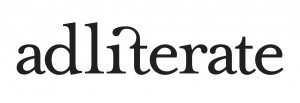Spoiled by choice

The Creation of Adam by Michelangelo, part of his scheme for the ceiling of the Sistine Chapel completed in 1512. I may be wrong about this but as far as I am aware he wasn’t asked to present three different options for the ceiling to go into research.
Once upon a time in a land far away come the appointed hour of the creative presentation, agencies recommended one idea to their clients.
It would represent the best solution that they could possibly develop to answer the business problem they had been given. And because, of all the ideas that they had generated and rejected, this was the best one they could find, they then presented with absolute conviction, backing up the point of view with instinct, research and sheer force of personality.
This approach seemed to work fine until agencies got lazy. They still presented one solution but it was anyone’s guess whether this was the finest flowering of the agency’s creative product or something conjured out of thin air in a desperate attempt to meet the looming deadline of the client presentation.
So one or two newish agencies hatched a plan. They would present multiple routes earlier on in the process at what were termed ’tissue meetings’, nothing could be bought or sold in these meetings but they allowed an early airing for fresh ideas. Chiat Day invented them in the US and HHCL brought them over to the UK when they launched in 1987. Even in the later stages of creative development they would keep multiple routes on the table and allow research to help decide which one to go with.
And this process worked an absolute treat. In the hands of very good agencies it allowed braver and more difficult work to be aired early on and let clients get used to the more challenging stuff on the table, enhancing the likelihood it would be made. Not only did it lead to more interesting advertising but it was an absolute boon to new business because clients found this approach refreshing, not least the peculiar idea of multiple routes in pitches. In addition good clients gained confidence in working with rawer ideas and keeping the difficult stuff on the table at least until it could be researched.
But then something rather dispiriting happened. The rest of adland cottoned on, or were forced to by clients who were getting better work from elsewhere in their roster using the new process. Tissue meetings and multiple routes became the industry standard. Clients wanted to know why there weren’t three routes on the table, regardless of their merit, because they were paying good fees and they wanted to get their money’s worth. Often they would demand that new creative ideas were developed simply to pad out research – not the most auspicious begining to any creative process.
Never mind the quality, feel the number of make-weight creative ideas, became the new industry mantra.
Far from the tissue meeting and multiple route process improving the standard of work, it actively conspired to degrade it. Agencies, reassured that they had something in the bag, presented work that they didn’t wholeheartedly believe in and clients became addicted to the seemingly collaborative approach which appeared to yield genius so very rarely. In a way, because there was no longer a massive punctuation mark in creative development – the creative presentation – both parties slipped into a process that forced neither one of them to step back at any time and ask “but is what we have actually good, I mean really good”. Welcome to the era of ‘some advertising’.
Ask most people in agencies about this development and they simply shrug their shoulders in resignation – thats what the market demands these days so we have to do it. In the US the need for multiple routes is even written into agency contracts on occasion.
But is anyone really being served well by this approach.
Its not that I am against sharing raw ideas or against researching multiple routes. On Tango we would often have ten to fifteen ideas for Tissue and research three all of which the agency were desperate to make. But I worry that it has eroded the responsibility of the agency to recommend the right course of action to a client in solving their business problem.
I can’t help feeling that the time is right to reverse at least some of the damage and return to the idea of a firm agency recommendation. It has already started in pitch presentations where variety is provided by the number of competing agencies and so multiple routes from one agency is unnecessary and increasingly unnerving for clients wanting to understand each agency’s clear opinion.
But isn’t time that we re-embraced the idea of ‘recommendation’ in our day to day relationships and give our clients the very best work we possibly can and nothing but nothing else. Isn’t it time to put and end for all time to the hideous spectre of ‘the route we want to sell’, ‘the route we don’t mind selling’ and ‘the safe route the client will like’?
After all recommendation is surely why clients go to agencies in the first place? To ask the people that create selling ideas every hour of every day and have done so for a couple of decades or so ‘what would you do to solve this problem?’
Because, regardless of what is asked for, it remains the case that all we, our clients and our customers really want out of an agency is one brilliant idea.
Discover more from
Subscribe to get the latest posts sent to your email.

Hiya,
There are so many factors sustaining this approach. Trust, evidence of industry, promiscuous strategy… I fear we might never get back to presenting the one agency recommendation. The one factor that is least easily resolved is client instincts & courage to love an idea.
A writer mate argued once that it was a lack of courage on the client side part. But good ideas should not be accompanied by a grave fear of leaping into the breach. Brave work should still be smart work.
Another mate believed it was their lack of conceptual understanding that let clients down. In this instance, I’d be more concerned that the work is too high minded, unfinished & poorly presented.
One client confessed – “it is so much easier to say “no”. you don’t get fired for saying “no” to things, you get fired for saying “yes” to the wrong ideas”. We do everything in our power to imbue the client with confidence in what’s presented, but their corporate culture is their ultimate master.
Most of my clients with creative communication insecurity (CCI – consider it trademarked!) don’t know their brand & fans well enough. It’s the whole brand ads vs brand culture/Meatball Sunday banter.
I’ve recently spent a lot of time training clients on some basics – brand & consumer immersions, visioning games, creative idea definitions etc. We still present multiple creative routes, but their is certainly more confidence when it comes to evaluating the work (the agency doesn’t get cast out of the room so they can share insecurities about the ideas any more).
With understanding & shared ambition comes trust. Hopefully.
Most people have one or two soap boxes upon which to stand. You prove once again, Richard, that there is no end to the almost-manifesto-like creations you can and should bring to the table.
I love andiho’s comment as well. Is not part of the fault the fact that we haven’t empowered our clients to be owners of the brand? CCI comes as a result of a fear of what to do next, no?
Immersions, visioning games, and collaborative research/design are ways to empower the client to understand the key insights and opportunities impacting their customers. What scares me is when I see these tools being used to simply give face time to the client.
It was Alan Hedges who said that most creative development research is strategic research done too late.
Anyone researching multiple creative routes simply hasn’t done their strategic homework. And is expecting consumers to work it out for them.
I’m with you in spirit, but the problem (?) is that clients enjoy making choices, and doing so keeps them reassured about the relationship and what’s going to come out of it. Especially when you’re talking about interactive ads, which must be coded as well as designed, it’s a real investment to go down the road so far that the ad is nearly done before it gets rejected.
Your post is complimented by a TED talk made by Barry Schwartz on ‘The Paradox of Choice’
you can find it below:
http://www.ted.com/index.php/talks/view/id/93
enjoy!
3
Andy beat me to the introduction of Barry Schwartz to the conversation. I certainly agree with the correlation with what he calls “the tyranny of choice,” and his insight on why natural human insight is to equate choice with productive decision-making – often when the opposite dynamic in fact exists
Yes! All this emphasis on innovation (or “choice”, here) is creating a thicket of this that and the next thing for us. Brands that get one idea right, especially if it simplifies things for us, should do pretty well. Totally counterintuitive to offer just one of anything these days.
Choice sucks. We hate making decisions. We only think we like having options. That’s the paradox.[Schwartz is a legend.]
Presented with too many alternatives, without anything obvious to base our decision on, we shut down.
We know this about consumers. It is one of the biggest problems in a post scarcity economic system. It probably holds true about clients.
p[Being forced to make relative decisions does however provide an option to ‘force the decision: here’s a trick. Present 3 options. Present 2 that are basically the same, but one that is much better. People can then make a relative decision – the wild card has nothing to compare, but the better same route is obviously better – so people will tend to choose it. See Predictable Irrationality for more on this.]
Except. By having a number of routes, you can forestall making an actual decision. And everyone hates making a decision – it collapses all other potentialities.
But the only way to keep all your options open is to DO NOTHING.
Presenting a client with a menu, rather than a recommendation, is lazy. I’ve done it more times that I care to think about – it’s almost easier to create loads of ideas than to champion one.
The problem then: are we suppliers or advisers?
If suppliers: here’s our menu – what idea would you like to buy?
If advisers: this is your problem, here is our recommended solution. Let’s discuss why we think it will work.
—————-
“I don’t know advertising but I know what I like.”
Agile is all the rage these days. Digital shops in particular have taken tissue sessions to a whole new level that see clients becoming a key part of the creative and development process.
What is great about this is many of the things you mention. What sucks about this, is that clients think more and more (and we empower them to do so) that they are chief strategy officers, creative directors and now when their wife says she hates our mocks, it has more meaning (i always tell them that my kid thinks they are great and she’s probably cooler).
Let’s have less “rafts of ideas” – a raft is a ragtaggle of flotsam and jetsam, cobbled together to get you out of a desperate spot, (unless your name is Thor Heyerdahl) – and more rockets!
Pope Julius II was actually the client from hell. The work on the Sistine chapel ceiling took three years and had to be re-done once. Check out The Agony and the Ecstasy for some great tips on client management.
the brief
feedback